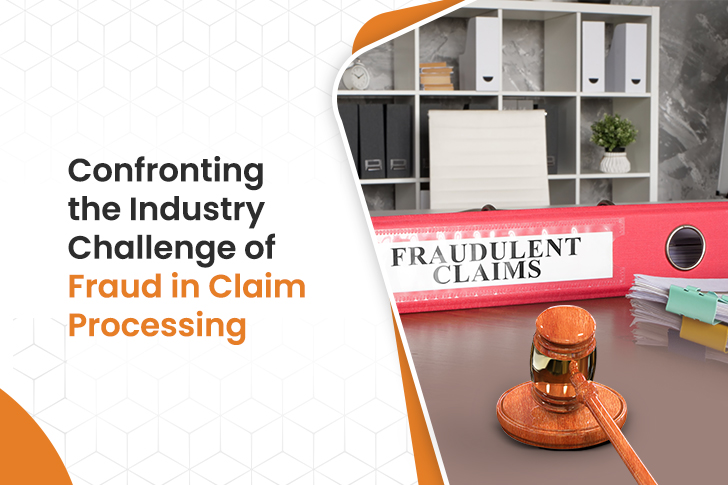In an era where the global insurance industry grapples with an escalating challenge of fraudulent claims, it becomes crucial to dissect the issue holistically. Fraudulent claims, costing the industry billions of dollars each year, not only impact the financial health of insurance companies but also burden the honest policyholders with inflated premiums. This blog aims to dive deep into the problem, exploring the nature of such frauds, the role technology plays in combating them, the legal ramifications, and the innovative strategies for prevention, culminating into a proactive approach for the future of claim processing.
Identifying and Understanding the Scope of Fraudulent Claims
Insurance fraud is a serious issue, costing the industry billions annually. As per the Federal Bureau of Investigation’s (FBI) estimates, non-health insurance fraud alone costs over $40 billion each year. These costs indirectly affect the average U.S. family, increasing their insurance premiums by $400 to $700 annually.
Current Situation of Fraud in the Claim Processing Industry
The claim processing industry, particularly in the insurance sector, is currently wrestling with a high volume of fraudulent claims. This situation not only places a financial strain on the industry but also challenges its efficiency and reputation. Therefore, it’s critical to understand the various types of fraudulent claims, which can range from exaggerated losses to premeditated incidents.
Types of Fraudulent Claims
Fraud spans across several types, including exaggerated losses and deliberate incidents, each presenting unique challenges to the industry.
Signs of Fraudulent Claims
Red flags such as inconsistent information, delayed reporting, or a history of multiple claims may indicate fraud.
Impact of Fraudulent Claims
Fraudulent claims increase premiums for honest policyholders, cause financial loss for insurers, and slow down the claims process.
Statistics on Fraudulent Claims
Approximately 10 percent of the property and casualty insurance industry’s losses each year, around $34 billion, are due to fraud.
There are numerous examples of insurance claim frauds in recent years.
- In 2018, a California woman was sentenced to over six years in prison for running a fraudulent scheme where she earned more than $1 million in insurance payouts from fake slip-and-fall accidents.
- In another case, a New York man staged a car accident and falsified medical records to receive insurance benefits. This act was part of a larger, organized crime ring that resulted in over $279 million in fraudulent bills.
The Role of Technology in Detecting and Preventing Fraud
The insurance industry is increasingly turning to technology to combat the persistent issue of fraud, which according to the FBI, costs non-health insurance more than $40 billion each year. Technological advancements offer robust solutions to detect and prevent fraudulent claims, making it a critical component in the claim processing industry.
Major points include:
- Data Analysis and Prediction: Advanced machine learning algorithms and Artificial Intelligence (AI) can analyze extensive data sets to identify patterns and detect anomalies that may indicate fraudulent activities. Predictive analytics can help highlight high-risk claims that require in-depth investigation.
- Blockchain Technology: Blockchain can enhance data integrity and transparency, making it more challenging for fraudulent claims to slip through unnoticed. This technology allows the creation of a decentralized and immutable ledger, ensuring every transaction is recorded and verified.
- Fraud Detection Software: Specialized software can automate the process of detecting fraudulent patterns, making the claim process more efficient and reliable. These tools can analyze numerous variables in real-time and highlight suspicious claims for further investigation.
- Digital Transformation: The adoption of digital platforms for claim submission and processing reduces the chances of manual errors and fraudulent manipulations. It also makes the process more transparent and traceable.
- Internet of Things (IoT): IoT devices, such as telematics in auto insurance or wearable devices in health insurance, provide accurate and real-time data, reducing possibilities of false claims.
Legal and Regulatory Implications of Fraud in Claim Processing
Insurance fraud is not just a financial issue but also a legal and regulatory concern. Fraudulent claims can lead to severe penalties under laws such as the U.S. False Claims Act. Regulatory bodies like the National Insurance Crime Bureau (NICB) actively work to detect and prevent insurance fraud.
Key points include:
- Strict Legal Penalties: Insurance fraud is a serious crime that can result in severe consequences, including substantial fines and imprisonment. These penalties serve as deterrents, discouraging individuals and entities from engaging in fraudulent activities.
- Regulatory Compliance: Insurers are subject to various regulations designed to prevent and expose fraud. Compliance requirements may include regular audits, accurate record-keeping, and mandatory reporting of suspected fraudulent activities. Non-compliance can result in penalties, including fines and license revocation.
- Cooperation with Law Enforcement: Insurance companies often collaborate with law enforcement agencies to investigate suspected fraud cases. This can involve sharing data and resources to help identify and prosecute fraudsters.
Innovative Strategies for Fraud Prevention
In addition to leveraging technology, insurance companies can also implement innovative strategies to prevent fraud.
Important points to consider are:
- Dedicated Fraud Detection Team: A dedicated team focusing on fraud detection can significantly increase an insurer’s ability to identify fraudulent activities. This team would be responsible for investigating suspicious claims, developing anti-fraud measures, and staying up-to-date with the latest fraud trends.
- Zero-Tolerance Policy: Implementing a stringent policy against fraud sends a strong message to potential fraudsters. It demonstrates that any fraudulent activities will be thoroughly investigated and prosecuted, providing a significant deterrent.
- Staff Training: Regularly training staff on the latest fraud detection techniques can significantly improve an insurer’s ability to identify fraudulent claims. It ensures that employees are well-equipped to recognize the signs of fraud and know how to respond appropriately.
- Industry Collaboration: By collaborating and sharing information with other insurers, companies can gain a more comprehensive view of fraud trends. This can lead to the development of industry-wide strategies to combat fraud.
The Future of Claim Processing: A Proactive Approach to Fraud
The future of claim processing requires a more proactive approach to fraud. This involves foreseeing potential fraudulent activities and taking necessary actions to prevent them.
Key elements in this approach include:
- Advanced Fraud Detection Tools: The use of more sophisticated tools, such as AI and machine learning, can help insurers predict and identify fraudulent activities before they occur. These tools can analyze vast amounts of data to uncover patterns that may indicate fraud.
- Improved Claim Validation Process: Enhancing the claim validation process can ensure that only legitimate claims are approved. This could involve more rigorous checks and balances, as well as the use of technology to verify claim information.
- Educating Consumers: Informing policyholders about the negative impacts of insurance fraud, including increased premiums and potential legal consequences, can discourage such activities. Insurers can use various channels, including their websites, social media, and direct communication, to educate their customers
Conclusion
As we navigate through the complexities of insurance claim fraud, it becomes evident that a multi-faceted approach is essential to combat this menace. With the amalgamation of advanced technologies, robust regulation, innovative strategies, and consumer education, the industry can look towards a future with a significantly reduced scope for fraud. This proactive approach is not just about confronting the challenge, but about turning it into an opportunity – an opportunity to streamline processes, enhance transparency, and ultimately, build a more trustworthy, efficient, and customer-centric insurance industry.







